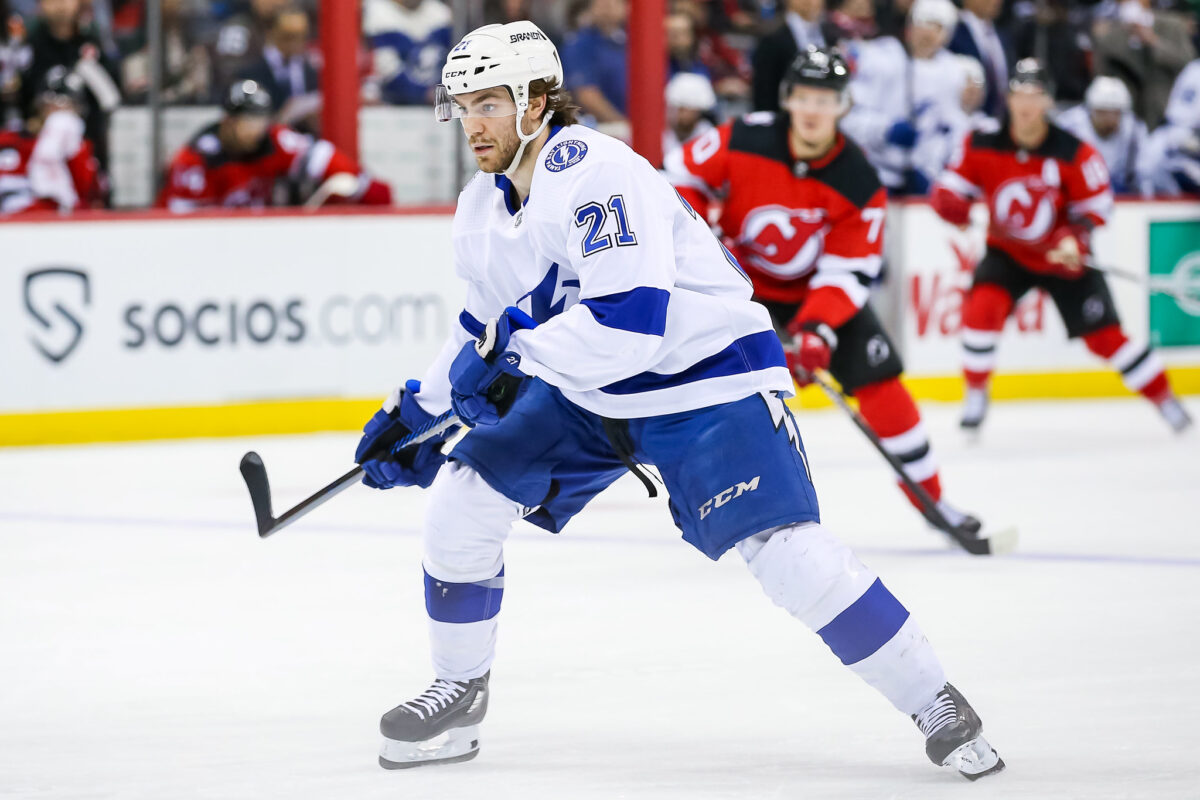The Tampa Bay Lightning (13-7-2) are a little over a quarter of the way through the 2025-26 NHL season, and while there’s a lot more hockey to be played, there are several aspects of the Lightning that we’ve already seen go into fruition.
Tampa Bay came into this season projected to win the Atlantic Division and potentially compete for the best team in the Eastern Conference and the Presidents’ Trophy, somewhat due to the many injuries the Florida Panthers have suffered and the Toronto Maple Leafs losing Mitch Marner.
While there have been some hitches at points, the Lightning have 28 points, which leads the Atlantic. They’re only two points away from the best team in the conference, behind the Carolina Hurricanes (30), and are once again expected to compete for the Stanley Cup.
Takeaway #1: The Lightning Overcame a Slow Start
Early on in the season, things looked pretty bleak for the Lightning. Through the first seven games, the Lightning had a 1-4-2 record, securing only four points. That put the Lightning as the second-worst team in the NHL, and with the Seattle Kraken owning their pick due to the Yanni Gourde/Oliver Bjorkstrand trade, many questioned whether the window for contention was slamming shut.
Well, it appears that start was a mirage. The Lightning have gone 12-3-0 since that awful stretch, including a five-game winning streak and their current four-game winning streak. They’ve dropped a few questionable games, such as a 6-2 loss to the Vancouver Canucks, but the Lightning are all the way back.
Takeaway #2: Depth Has Stepped Up
Usually, the makings of a Stanley Cup contender include high-end scoring talent, a shutdown defensive system, an above average to Vezina-caliber goaltender, and quality depth. In the years since their Stanley Cup Final loss to the Colorado Avalanche in 2022, the Lightning have lost quality depth and players such as Gourde, Ondrej Palat, and Alex Killorn left the team via expansion draft or free agency. With their absences, the Lightning have fallen short of expectations, losing in the first round for three-consecutive years.
The efforts to replace departing players have been a mixed bag in the past (Tanner Jeannot, anyone?) but it appears the Lightning have finally cracked the code. Last season, the Lightning acquired Gourde (again) and Oliver Bjorkstrand from the Kraken in exchange for Michael Eyssimont, a 2025 second-round pick, and a top-10 protected first-round pick from 2026-27.
While the Lightning paid an expensive price to part ways with them, the trade has given them needed depth up the middle and on the wings. Gourde has three goals and three assists through 22 games, while Bjorkstrand has two goals and six assists through 22 games.
The Lightning have seen contributions from minor signings as well. Defenseman Charle-Edouard D’Astous was signed out of the Swedish Hockey League. He had 12 goals and 39 points with Brynäs IF last season, helping them to a first-place finish and a trip to the finals, and his offensive instincts have translated to the NHL pretty well so far. He has a goal and five assists through 15 games with the Lightning.
With injuries to Ryan McDonagh, Erik Cernak, and Victor Hedman, the Lightning will more than likely give D’Astous more ice time, so there’s a chance his offensive role could expand. He’s already on the second power-play unit and penalty-kill unit, and he can easily play himself into a top-pairing.
Related: How Long Can the Lightning Keep Overcoming the Injury Bug?
Contributions from young talent like Gage Goncalves, Emil Lilleberg, and Dominic James have rounded out the team to look much deeper than squads in the past. As a result, the depth has effectively masked the several injuries on the roster.
Takeaway # 3: Brayden Point Is Struggling
Unfortunately, the Lightning’s surge comes with a major caveat: superstar center Brayden Point isn’t playing well. Point has just three goals and eight assists through 21 games, with a minus-11 rating.

For a player that’s averaged around 46 goals and 89 points these past three seasons, it’s concerning to see him struggle. His shooting percentage is at 6.8%, the lowest it’s been in his career. His second-lowest shooting percentage, which occurred during the 2017-18 season (14.7%) is more than double this season’s tally, while his minus-11 rating is the second lowest in his career behind 2023-24.
The advanced statistics still believe him to be a good player. Corsi For percentage measures how many shots your team attempts with you on the ice versus the opponent, while Fenwick percentage indicates how many more unblocked shots your team attempts with you on the ice versus your opponent. His Corsi (60.8%, average is 50%) and Fenwick percentages (59.4%, average is 50) are still very good, indicating that he will course-correct into the player he’s been the past three seasons.
Tampa Bay has done well in shielding how ineffective he’s been, with people like Brandon Hagel stepping up as a first-line talent. However, he’ll need to step up to his usual level of scoring for the Lightning to look more like a top-tier Stanley Cup contender.
Lightning Have Busy Upcoming Schedule
Despite a rough start to the season, the Lightning are still first place in the Atlantic Division with 28 points. However, with the Eastern Conference so competitive, they’re just three points ahead of the Pittsburgh Penguins (10-6-5), who are below the playoff line.
However, the Lightning have a chance to improve their Eastern Conference standing. After playing the Calgary Flames on Nov. 26, the Lightning close out November with road games against the Detroit Red Wings (Nov. 28) and the New York Rangers (Nov. 29). In December, they start off with nine straight Eastern Conference opponents, including the Toronto Maple Leafs (Dec. 8) and Panthers (Dec. 15) from the Atlantic Division.
